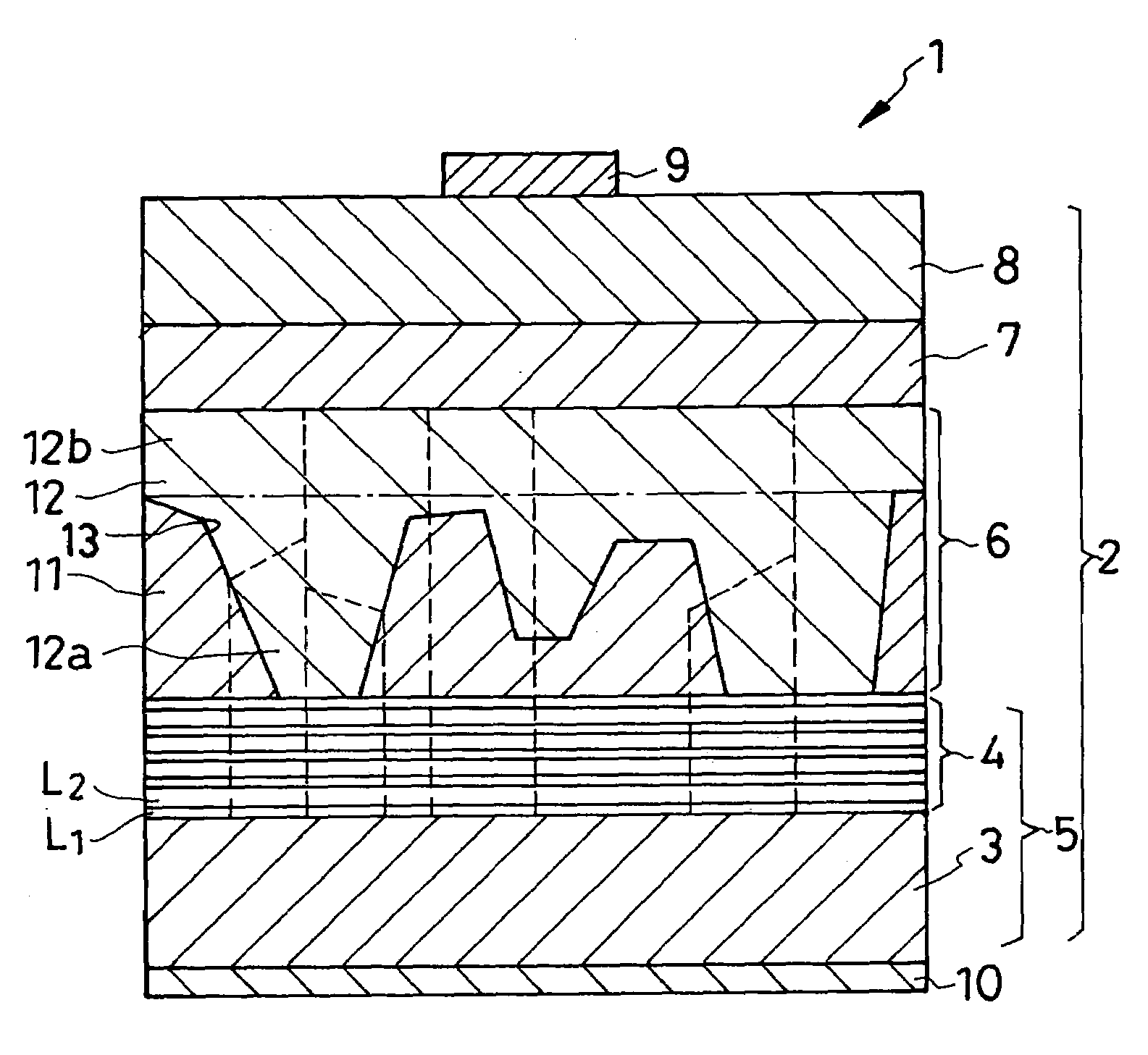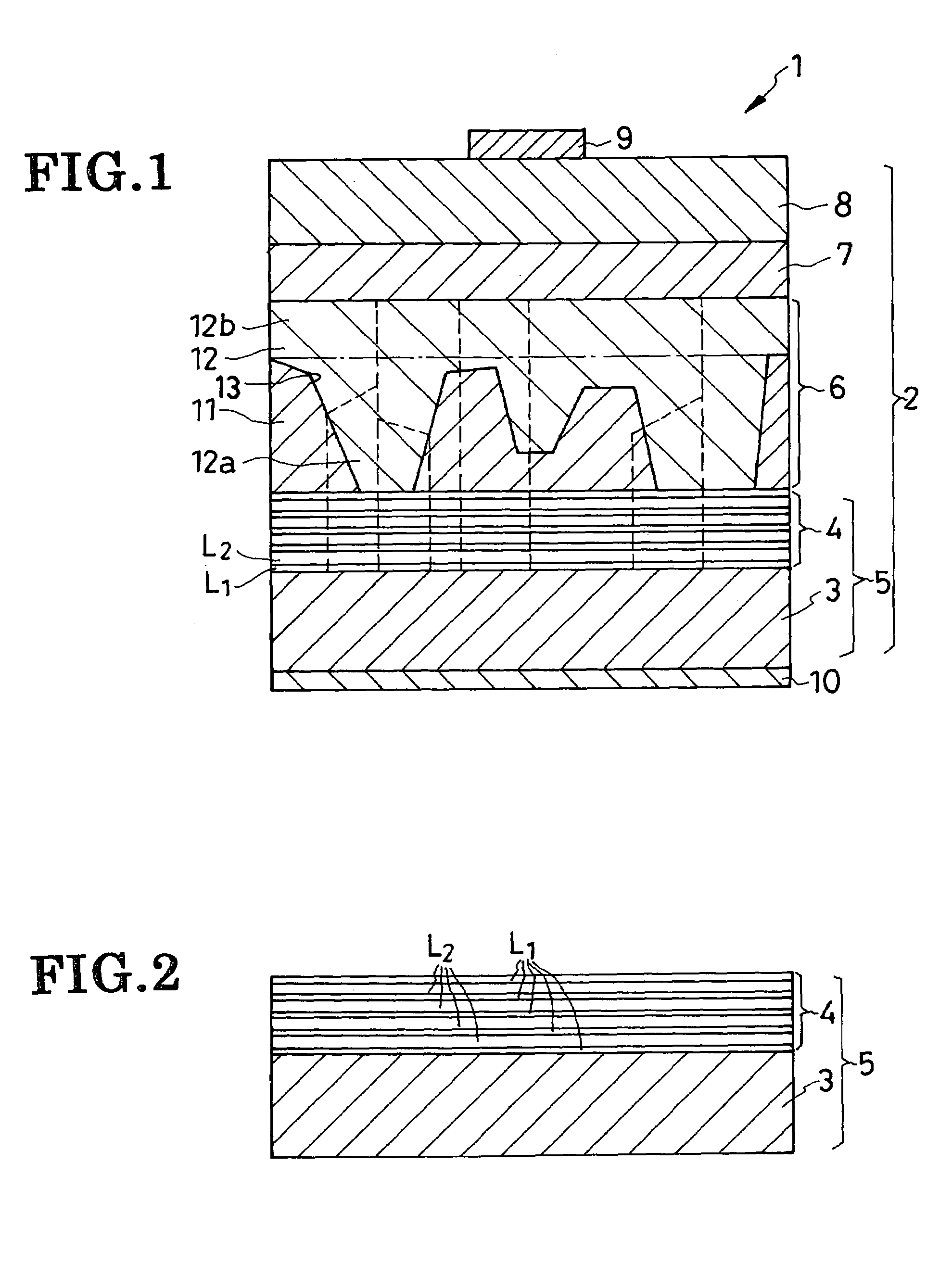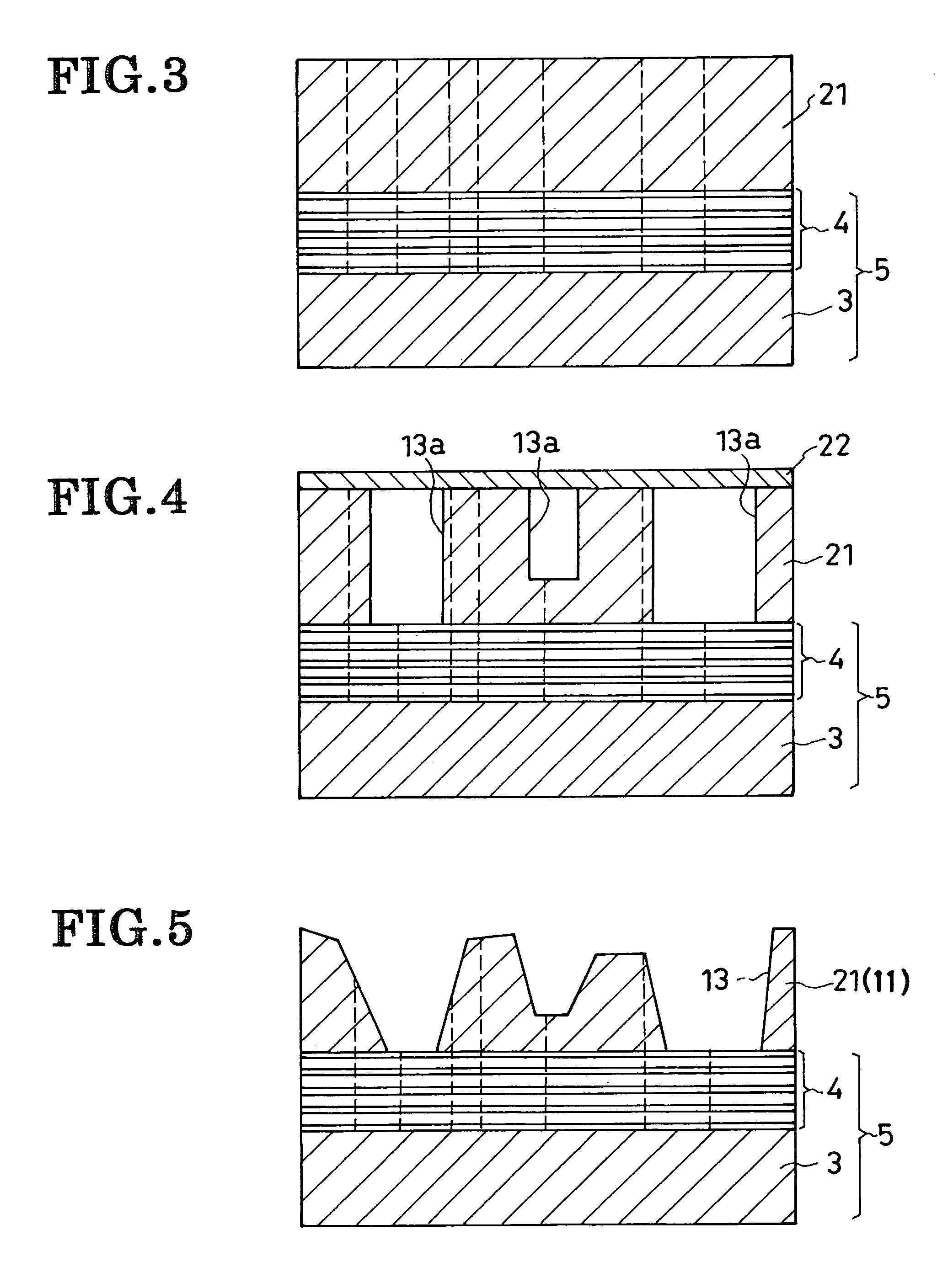Method of making substrates for nitride semiconductor devices
a technology of nitride semiconductors and substrates, which is applied in the direction of polycrystalline material growth, crystal growth process, chemically reactive gas, etc., can solve the problems of inconveniently large differences in coefficient of linear expansion coefficients, difficult to solve problems, and easy dislocation of nitride semiconductor regions, etc., to achieve the effect of less cost and simplified process
- Summary
- Abstract
- Description
- Claims
- Application Information
AI Technical Summary
Benefits of technology
Problems solved by technology
Method used
Image
Examples
Embodiment Construction
[0026]The method of this invention will now be described more specifically as adapted for the fabrication of the LED 1 shown in FIG. 1. FIGS. 2–7 show successive steps in the course of the fabrication of the LED 1 and will be referred to more specifically during the subsequent description of the method of making the LED. The LED 1 has an LED body or LED substrate system 2 constituting part of a wafer which is sized for joint production of a plurality or multiplicity of LEDs.
[0027]The LED substrate system 2 includes a baseplate 3 which, in combination with an overlying buffer region 4, constitutes a baseplate system 5. Overlying this baseplate system 5 are three main semiconductor layers 6, 7 and 8, arranged one on top of another in that order from the lowermost one upward. The lowermost main semiconductor layer 6 is an n-type cladding or confining layer; the intermediate main semiconductor layer 7 is an active layer; and the topmost main semiconductor layer 8 is a p-type cladding or...
PUM
| Property | Measurement | Unit |
|---|---|---|
| thick | aaaaa | aaaaa |
| thick | aaaaa | aaaaa |
| thick | aaaaa | aaaaa |
Abstract
Description
Claims
Application Information
 Login to View More
Login to View More - R&D
- Intellectual Property
- Life Sciences
- Materials
- Tech Scout
- Unparalleled Data Quality
- Higher Quality Content
- 60% Fewer Hallucinations
Browse by: Latest US Patents, China's latest patents, Technical Efficacy Thesaurus, Application Domain, Technology Topic, Popular Technical Reports.
© 2025 PatSnap. All rights reserved.Legal|Privacy policy|Modern Slavery Act Transparency Statement|Sitemap|About US| Contact US: help@patsnap.com



